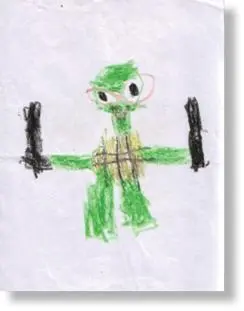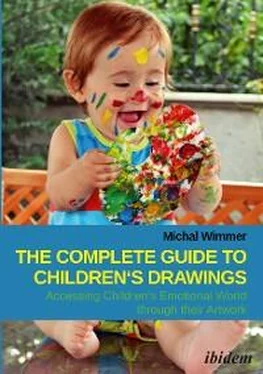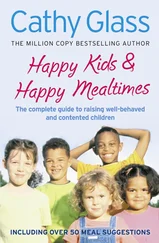1 ...8 9 10 12 13 14 ...18 2 Colors
Introduction
In 1777 the German philosopher Goethe climbed Mount Brocken in the Harz Mountains, where he noticed how the color shades changed on the snow: “Over the yellowish background of the snow, the shadows looked purple… while during sunset, everything around was filled with magnificent magenta and the shadows became beautifully green. Later on, following the sunset, the magical harmony vanished, replaced by a gray starry night”. The sunset which Goethe describes appears in countless other songs, stories, legends and drawings and one cannot remain indifferent to its powerful color combinations.
Colors and Science
Scientifically, colors were studied in terms of wavelength and frequency. It appears that the order of colors in the spectrum matches wave characteristics. For example, the color red which appears at one end of the spectrum has the longest (visible) wavelength and the lowest frequency. Purple, on the other hand, appears at the other end of the spectrum, with the shortest wavelength and highest. These characteristics, discussed in depth later on, affect children’s energy levels, as can be observed in their drawings.
Colors have also been studied from a physiological perspective, and it was found that they have a clear effect on our bodies (Fisher & Zelanski, 2009). Adding the clear physiological relationship between colors and our body to the mind-self relationship explains why children who are exposed to a certain color project it from their inner world to the outside by behaving in a certain manner. It is no coincident that we relax when we look at green mountains or blue oceans, and yet become more aroused when we see red. These insights are used for marketing purposes, but can also be relevant to our effort to understand our children’s world through their drawings.
When you compare children’s drawings to their personality traits, you see a significant relationship between them. Years of research have proven to us that using a certain color or color combination may project on emotional meanings that will be detailed further on. However, what is the reason for the strong influence colors have on our lives and drawings?
Observing nature and our long evolution process may provide the answer to this question. In prehistory, and in fact almost throughout human history, people were busy raising crops, domesticating animals and barter trading. These activities often included spending long hours outside, close to nature. As a result, people have developed various insights regarding nature and the way it operates.
These insights were subsequently used for survival or comfort. Their intensive contact with nature also caused our forefathers to unconsciously internalize the meanings of colors – they understood that green meant growth, new beginnings and abundance, brown meant a solid ground, black meant danger, and blue meant that the rain had stopped and they could resume work, and so on.
Analysis of children’s drawings and the meanings of colors used in them will show striking resemblance to our forefathers’ perception of colors. In other words, current color perception is a product of human cultural evolution. So, similarly to our instinctual perception of snakes as dangerous, we see in yellow (sunlight) as a source of joy.
This idea is reinforced by other phenomena in children’s drawing, which also show a connection between physical and mental aspects of decisions children make while drawing. Two such examples are the stages of development in drawings and the way objects such as houses are drawn in various cultures. In these cases, studies clearly show that children from all over the world follow the same general artistic path, most probably dictated by our inborn perception and collective unconscious.
Colors and Psychology
Colors form a universal language. Psychological theories, like Jung’s, about the meanings of signs, concluded that signs in dreams, stories and drawings are part of our collective unconscious. Accordingly, colors were also shown to have collective meanings. This means that even if a certain color has a specific meaning in a certain culture and different meanings in others, the internal, profoundly symbolic influence on individual choices will nevertheless be homogenous and universal.
The first psychological studies of the emotional meanings of colors were conducted by Goethe. In 1810, he began attributing positive significance to warm colors and negative significance to cold colors. He was followed by artists such as Kandisnsky and psychologists who studied color preferences at kindergarten age, among schoolchildren, among adults and among children hospitalized for cancer.
Colors in the Child’s World
Colors fascinate children ever since they are a few months old. The cerebral cortex is responsible for the complex interpretation of sensory input, enabling children to identify and name certain colors. When babies develop eyesight, they are able to distinguish between dark and light colors and show greater interest in shiny colorful toys. Later on, they will develop the ability to differentiate shapes and patterns.
Colors arouse various feelings among children – for example, some will like red, but others will hate it because it reminds them of medicine. Some colors rouse children to action, others calm them down, and still others will cause disquiet and stress. Similarly, it seems the choice of colors in the child’s bedroom affects his mood and general functioning.
Most children enjoy using colors in their drawings. The exposure to colors develops their sensory mechanisms, so that the sense of sight integrates with the sense of touch, improving the child’s perception and functioning.
However, some children are color blind. These children process colors differently, and find it particularly difficult to distinguish between red and green and between blue and yellow. The problem is usually diagnosed around ages 4–5, after the children have acquired the ability to name colors. In the case of color blind children, no personality conclusions may be drawn based exclusively on the colors in their drawings; other elements and graphic indicators must be used instead.

Figure 2-1:Using color simply to depict reality
The key to diagnosing through colors is to look beyond the drawing. That is, ignore the drawing’s structure and elements such as house or tree, and focus on the dominant color. Nevertheless, you must beware of attributing far-reaching personality or behavioral meanings to the colors without cross-checking additional indicators. For example, the color green in figure 2-1 must not be ascribed emotional meanings because the use of green in this case is natural when drawing the ninja turtle figure.
In addition to the cross-checking of additional indicators in a child’s drawing, another important prerequisite is the amount of drawings analyzed – 25–30 will provide a good basis for a comprehensive analysis. If you observe recurring and dominant use of the same color in many of the child’s drawings, you may reach conclusions about his personality and difficulties based on the meaning of this color.
Furthermore, when you see a dominant color in the child’s drawings check with his parents whether this color was the only color available for drawing at the time. If the child had no other alternative, I don’t recommend reaching any conclusion about his inner world based on the meaning of colors.
This explains the meaning of colors in children’s drawings and their relationship with various personality traits. The choice or overuse of a certain color can help us arrive at conclusions about the child’s life.
Читать дальше













